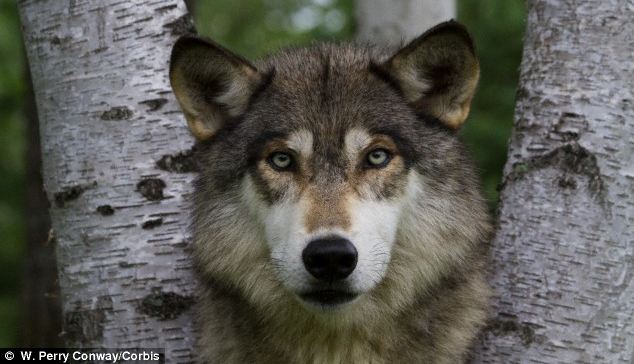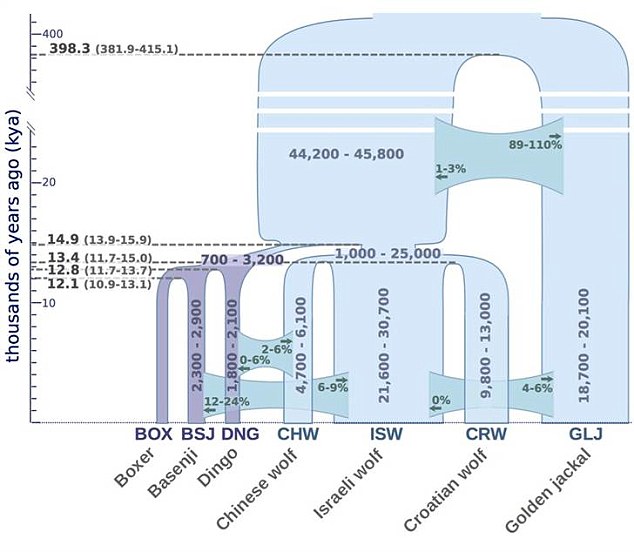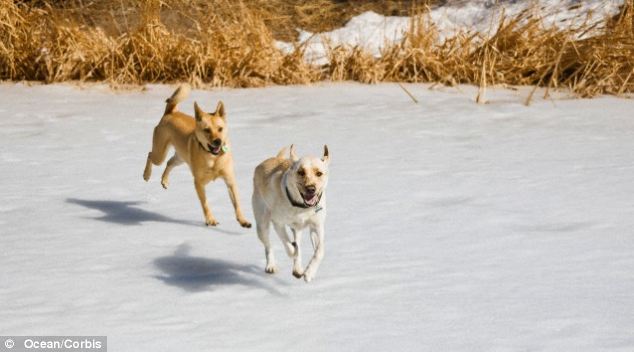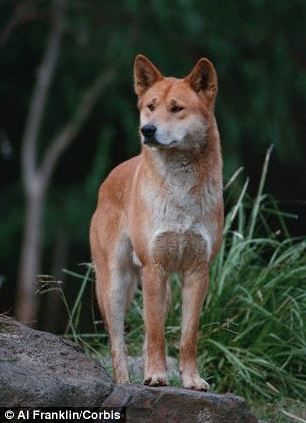
- U.S. scientists believe the genetic overlap observed between some modern dogs and wolves is the result of interbreeding after dog domestication
- University of Chicago researchers said their study reflects a more complicated history of how canines came to be domesticated
U.S. scientists said that part of the genetic overlap observed between some modern dogs and wolves is the result of interbreeding after dog domestication and not a direct line of descent from one group of wolves.
They believe their research reflects a more complicated history than the popular story that early farmers adopted a few docile, friendly wolves that later became our modern canine companions.
Instead, the earliest dogs may have first lived among hunter-gatherer societies and adapted to agricultural life later, according to the study which is published in the journal PLoS Genetics.
Researchers from the University of Chicago said that dogs are more closely related to each other than to wolves, regardless of geographic origin as they do not descend from a single line of wolves.
John Novembre, associate professor in the Department of Human Genetics at the university, who is also the study's senior author, said: 'Dog domestication is more complex than we originally thought.
'In this analysis we didn't see clear evidence in favour of a multi-regional model, or a single origin from one of the living wolves that we sampled.
'It makes the field of dog domestication very intriguing going forward,' he added.


They produced genomes for two dog breeds - a basenji, which originates in central Africa and a dingo from Australia - as both areas that have been historically isolated from modern wolf populations.
The researchers also sequenced the genome of a golden jackal to serve as an 'outgroup' representing earlier genetic divergence.

Their analysis of the basenji and dingo genomes, plus a previously published boxer genome from Europe, showed that the dog breeds were most closely related to each other.
Likewise, the three wolves from each geographic area were more closely related to each other than any of the dogs.
Dr Novembre said the findings of the study tell a different story than he and his colleagues anticipated.
Instead of all three dogs being closely related to one of the wolf lineages, or each dog being related to its closest geographic counterpart, they seem to have descended from an older, wolf-like ancestor common to both species.
'One possibility is there may have been other wolf lineages that these dogs diverged from that then went extinct,' Dr Novembre said.
'So now when you ask which wolves are dogs most closely related to, it's none of these three because these are wolves that diverged in the recent past.
'It's something more ancient that isn't well represented by today's wolves,' he added.
The study shows how complex the early domestication of wolves was and Dr Novembre said his team is trying to collect every scrap of evidence to reconstruct what happened in the past.
'We use genetics to reconstruct the history of population sizes, relationships among populations and the gene flow that occurred. So now we have a much more detailed picture than existed before, and it's a somewhat surprising picture,' he said.
GENETIC TESTING PROVES DOG ANCESTORS FORMED A SPECIAL BOND WITH MAN DURING THE ICE AGE
Dogs were man's best friend as far back as the Ice Age and dogs and humans first bonded between 19,000 and 30,000 years ago, according to a study published in November.
That was when wolves, ancestors of domestic dogs living today, were first tamed by ancient hunter gatherers, according to genetic evidence.
Early tamed wolves may have been trained as hunting dogs or even protected their human masters from predators.
The findings challenge a previous theory that dog domestication happened some 15,000 years ago in eastern Asia, after the introduction of agriculture.
In reality, the history of the bond between dog and man appears to go back much further, to a time when fur-clad humans were living in caves and hunting woolly mammoths.
Scientists used DNA analysis to establish what populations of wolves were most related to living dogs.



Reader Comments
to our Newsletter